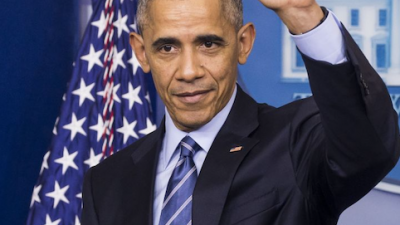The World Health Organization is a 194-nation cooperative that promotes public health and saves lives across the globe. Unlike Trump, the WHO responded quickly and aggressively to COVID-19. Now Trump is trying to flip the script — accusing the WHO of incompetence and cover-up.
WHO Said What to Whom?
Dec. 31, 2019: China discloses its outbreak of a novel coronavirus. At the time, 15 Trump administration officials already embedded at WHO headquarters in Geneva begin working full time with the organization on the virus. At least six other US officials at WHO headquarters and two more working remotely dedicate most of their time to COVID-19.
In the weeks that follow, American WHO officials and other US government scientists engage in all significant WHO deliberations and decisions regarding the management of the COVID-19 outbreak. They have access to all WHO information and contribute to its conclusions and recommendations.
Jan. 3, 2020: The director of the Centers for Disease Control and Prevention warns Health and Human Services Secretary Alex Azar that China may have discovered a new coronavirus. Azar tells his chief of staff to notify Trump’s National Security Council. This is a very big deal, Azar says.
Jan. 16/17: German researchers produce and release a COVID-19 diagnostic test.
Jan. 18: After trying to reach Trump for weeks, Azar finally gets through by phone to warn him personally about the virus.
Jan. 23: The WHO warns that the outbreak in China has already spread to Japan, Thailand, South Korea, and possibly Singapore. It says that all countries should be prepared with containment measures that include active surveillance, early detection, isolation, case management, and contact tracing.
Jan. 24: Trump tweets praise for China’s “effort and transparency. It will all work out well,” he says.
Jan. 30: The WHO declares COVID-19 a global health emergency, noting that there are now 98 cases in 18 countries outside of China, including cases of human-to-human transmission in Germany, Japan, Vietnam and the US. Although it does not recommend limiting international trade and movement, the WHO urges all countries to “review preparedness plans, identify gaps and evaluate the resources needed to identify, isolate and care for cases, and prevent transmission.”
“[I]t is still possible to interrupt virus spread, provided that countries put in place strong measures to detect disease early, isolate and treat cases, trace contacts, and promote social distancing measures commensurate with the risk,” a related WHO statement urges.
Jan. 30: Azar again warns Trump about the virus. Trump calls him an “alarmist.”
Feb. 2: COVID-19 is already in the US when Trump’s restrictions on travel from China become effective. What he calls a “ban” is riddled with exceptions that allow more than 40,000 passengers from China to enter the US between Feb. 2 and Apr. 4 — in addition to the more than 390,000 people who arrived in January. By now, 38 other countries have instituted China travel restrictions that are at least as restrictive as Trump’s.
Late January and early February: US intelligence agencies and health officials continue to warn Trump that COVID-19 poses a global danger. He continues to dismiss their concerns.
Feb. 6: The WHO ships 250,000 COVID-19 tests to labs throughout the world, but the US is not among them because it chooses to develop its own test. The CDC ships only 90 tests to US public health labs.
Feb. 10: “China is very professionally run in the sense that they have everything under control,” Trump says. “[W]e just sent some of our best people over there, World Health Organization and a lot of them are composed of our people. They’re fantastic.”
Feb. 12: The CDC reveals that its tests are flawed and therefore useless.
Feb. 14: “We have a very small number of people in the country, right now, with it,” Trump says. “It’s like around 12. Many of them are getting better. Some are fully recovered already. So we’re in very good shape.”
Feb. 19: “I think it’s going to work out fine,” Trump says. “I think when we get into April, in the warmer weather, that has a very negative effect on that and that type of a virus. So let’s see what happens, but I think it’s going to work out fine.”
Feb. 24: The pandemic is “very much under control in the USA,” Trump tweets.
Feb. 25: “You may ask about the coronavirus, which is very well under control in our country,” Trump says. “We have very few people with it, and the people that have it are … getting better. They’re all getting better. … As far as what we’re doing with the new virus, I think that we’re doing a great job.”
Also on Feb. 25: Nancy Messonnier, a senior CDC official, tells reporters that COVID-19 is likely to spread within US communities and that disruptions to daily life could be “severe.” Returning from a trip to India, Trump calls Azar to complain that Messonnier is scaring the stock markets and he threatens to oust her.
Feb. 26: “Because of all we’ve done, the risk to the American people remains very low,” Trump says. “When you have 15 people, and the 15 within a couple of days is going to be down to close to zero. That’s a pretty good job we’ve done.”
Feb. 27: “Only a very small number in U.S. & China numbers look to be going down. All countries working well together!” Trump tweets.
Feb. 28: The CDC announces a new fix to its COVID-19 test kits. “It’s going to disappear,” Trump says of the virus. “One day it’s like a miracle, it will disappear.”
By Feb. 29: US testing finally resumes with valid tests. Meanwhile, the WHO has already produced and shipped more than 1.4 million tests, all of which go to other countries.
Mar. 4: “Some people will have this at a very light level and won’t even go to a doctor or hospital, and they’ll get better,” Trump says. “There are many people like that.” Appearing on Fox News, Trump also contradicts the CDC’s early guidance and says that people infected with COVID-19 may get better by “going to work.”
Mar. 5: Facing widespread backlash over his suggestion that infected people may get better by “going to work,” Trump falsely denies making the statement. In a tweet, he calls it more “Fake News and disinformation put out by the Democrats, in particular MSDNC.”
Mar. 6: Trump lies: “Anybody right now and yesterday, anybody that wants a test gets a test. They’re there. They have the tests and the tests are beautiful.”
Explaining his refusal to allow stranded passengers to leave the Grand Princess cruise ship, which is off the coast of San Francisco, Trump also says he doesn’t want infected passengers taken off the ship because it will raise the total case count in the US: “I like the numbers being where they are. I don’t need to have the numbers double because of one ship that wasn’t our fault.”
Mar. 8: At a Mar-a-Lago donor event, Trump says, “They’re trying to scare everybody, from meetings, cancel the meetings, close the schools — you know, destroy the country. And that’s ok, as long as we can win the election. But I really believe that if they see that the Trump administration is handling this virus in a professional, competent way, I don’t believe that’s going to hurt us.”
Mar. 10: Trump says, “It will go away, just stay calm. It will go away.”
Mid-March to Mid-April: As the COVID 19 outbreak explodes in the US, Trump finally acknowledges the crisis and recommends social distancing. By Apr. 14, there are at least 34,000 US deaths from the virus and more than 679,000 reported infections.
Apr. 14: Trump announces a halt to federal funding of the WHO while he assesses its “role in severely mismanaging and covering up the spread” of COVID-19. The next day, he calls the international health cooperative a “disgrace.” Subsequently, he repeats the attack regularly.
Apr. 17: “Everything that the WHO knew, the Trump administration knew — in real time,” The Washington Post reports.
WHO is Trump Really Talking About?
When Trump announced a halt to US funding for the WHO, he accused it of a slow and ineffective response to the outbreak. He said it failed to embrace public health measures that would have prevented the spread of the disease. And he said, “It would have been so easy to be truthful. And so much death has been caused by their mistakes.”
Psychologists call that projection.
Read all installments of Steven Harper’s Pandemic Timeline.
© 2020 Schumann Media Center, Inc.





